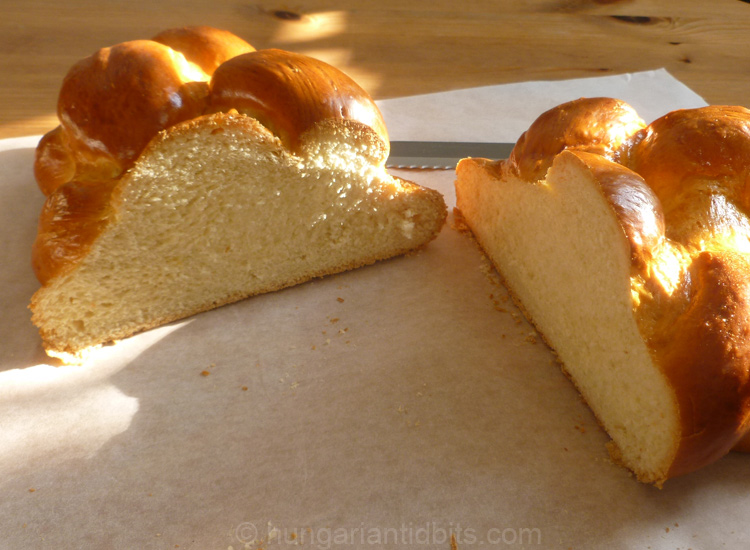
Introduction
This light and sweet plaited loaf is the perfect addition to any Easter table. It pairs beautifully with savory ham slices and cooked eggs, but it’s also great simply buttered with jam. The dough is made with yeast and slightly sweetened with sugar. To achieve a flaky and fluffy texture, we add heavy cream and full-fat milk to the mixture.
I followed the recipe of Limara, a Hungarian gastro blogger who is known as the undisputed Queen of baking in Hungary. Her blog in Hungarian is available here.
Ingredients:
- 500 gram (1.1 lb) plain flour
- 1 teaspoon of salt
- 60 gram (2.1 oz) granulated sugar
- 1 full egg
- 1 egg yolk
- 200ml single cream (0.8 cups) 25%-30% fat content, or whipping cream (pourable cream is preferred, not the thick ones)
- 100 ml (0.4 cups) full fat milk
- 20g (0.7 oz) fresh yeast
For glazing:
- 1 egg
Method
If you are using a bread machine, pour in all the room temperature ingredients and make a nice smooth dough then carry on from point #5 below.
If working by hand:
- Start off the yeast by warming the milk lightly, mix in a teaspoon of sugar and a little flour. Crumble the yeast in and set aside at room temperature, when it starts to bubble and rise, it’s ready.
- Measure the flour into a large bowl, break up any knots by stirring with a fork, even better, sift it beforehand, mix with the salt and sugar.
- Make a well in the middle, add the rest of the ingredients; the eggs, cream, and the yeasty milk – all has to be room temperature, so take the eggs and cream out of the fridge in advance.
- Combine the ingredients, once forming a dough start kneading, first in the bowl then take it out in one ball and work on clean flat surface lightly dusted with flour. If it’s sticky dust a bit more flour and work it in, if too dry and crumbly, combine with a splash of milk. After 10-15 minutes should arrived to a smooth springy shiny dough that doesn’t stick to hands or the work surface.
- Oil a medium-sized mixing bowl and place the dough into the bowl. Cover with cling film and set aside to rise at room temperature for 30-35 minutes, it should nearly double in size.
- When risen, turn the dough out onto a lightly floured work surface and knead to knock the dough back. This will result in finer texture at the end. Shape the dough into a ball.
- Divide the dough into six equal pieces or as many as you need for your selected style of plaits. Form neat doughballs, cover with a clean tea towel or a larger bowl and let them rest for 10-15 minutes.
- Roll out each piece into a strand about 40cm/16in long.
- Lay the strands out on the lightly floured surface like an octopus, fanned out from a central point at the top. Stick all the ends at the central point to the table with your thumb. Begin braiding according to the video below or your style.
- Transfer the loaf onto baking tray lined with parchment paper and preheat oven to 170°C (325°F).
- Wash the loaf with a beaten whole egg, then let it rest for another 30-40 minutes at room temperature during which it should grow in size.
- Brush with the beaten egg the second time.
- Bake in a preheated 170°C (325°F) oven for about 40 minutes.
- Cool on a wire rack.
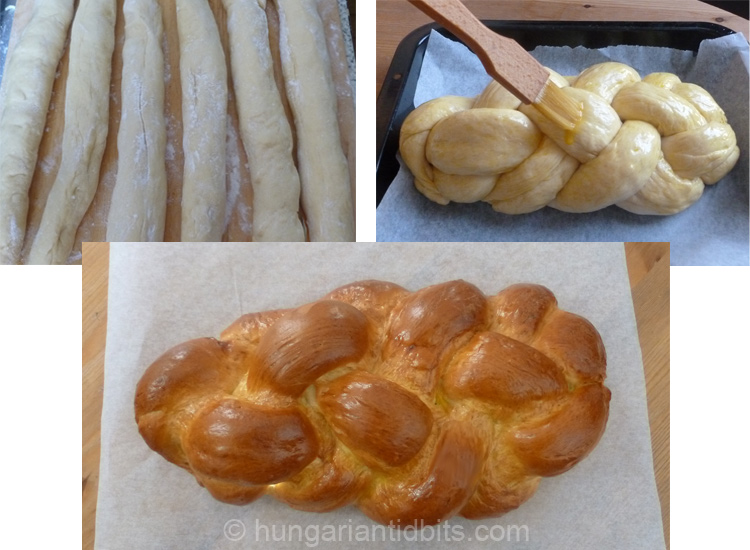
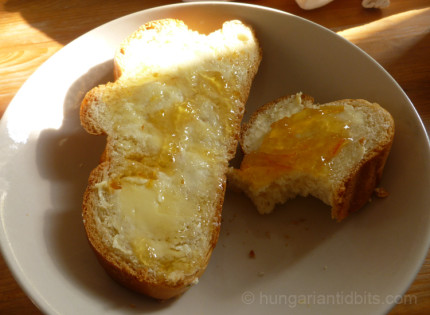
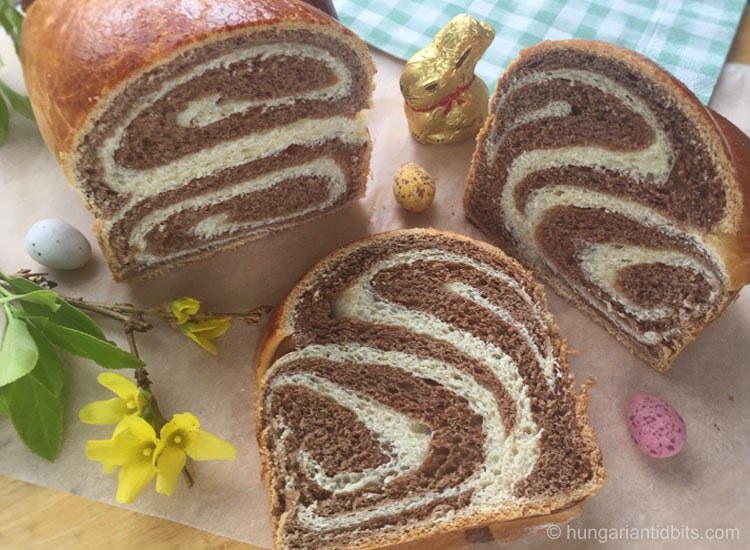
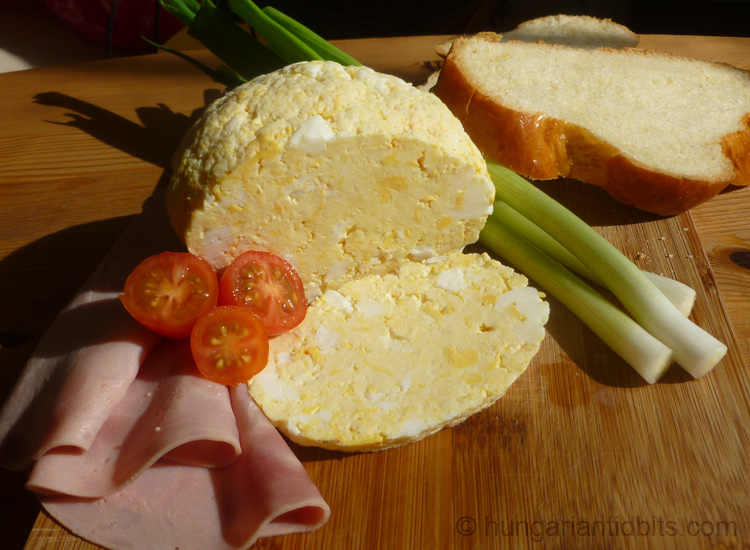
Made this yesterday. Couldn’t believe there wasn’t any butter, but turned out beautifully!
Happy Easter Shirley! Nice to hear the recipe worked well for you as well. I will make this again in future.
Does anyone know how many servings this recipe is? Thanks
I missed replying to this Esther, good question, this makes a large but light kalács, enough for 4-6 people at the table. The leftover will keep well for two three days wrapped tightly in plastic wrap, although best eaten fresh on the day.
I made this yesterday following the utube video. Turned out beautifully es nagyon finom volt!
Monica, szuper! 😊👍🧡